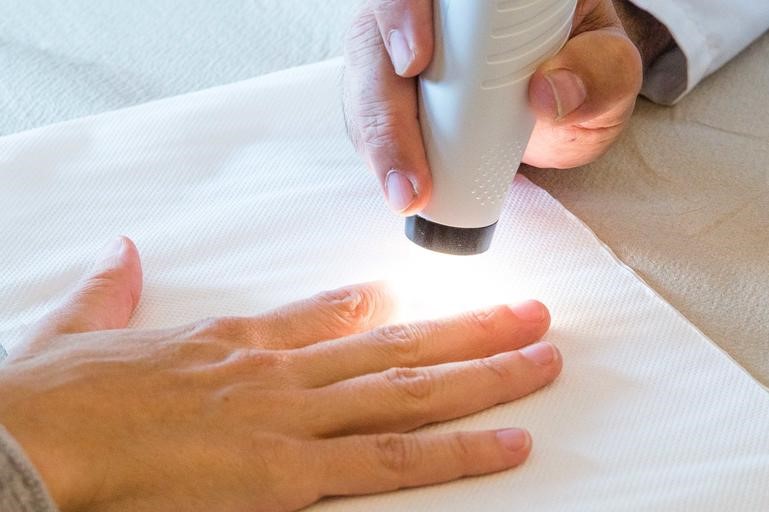
Percutaneous angioscopy: what is capillaroscopy?
Capillaroscopy is a test of the capillaries that is useful in cases of suspected blood circulation disorders
What is capillaroscopy used for?
Capillaroscopy is a non-invasive test of the skin of the fingers (cuticles) that is used to assess any alterations in the microcirculation.
It is recommended for patients who suspect rheumatic diseases of the connective tissue family on the basis of the presence of Raynaud’s phenomenon, most often a symptom in its own right without an underlying disease but in other cases associated in particular with systemic sclerosis.
Which patients can undergo capillaroscopy?
Capillaroscopy is particularly recommended for patients affected by Raynaud’s phenomenon, a condition in the fingers that occurs when the extremities are exposed to particularly low temperatures or emotional stress.
In the presence of Raynaud’s phenomenon, the fingers quickly turn pale, then first turn cyanotic and, once the usual warmth has been restored, red.
This is a generally benign phenomenon (thus representing a simple symptom, however unpleasant, referred to as primitive Raynaud’s phenomenon) but is sometimes also associated with autoimmune diseases.
Is capillaroscopy dangerous or painful?
No, it is a quick, non-invasive test that causes no pain to the patient.
How does capillaroscopy work?
Capillaroscopy is performed on the nail bed of the fingers (i.e. that part of the skin at the beginning of the nail) and consists of an optical analysis of the capillaries along their entire length using an instrument, the videocapillaroscope, equipped with a probe that is placed on the patient’s finger and a lens that allows the specialist to assess the characteristics of the underlying capillaries using a special, easily removable oil.
Read Also
Emergency Live Even More…Live: Download The New Free App Of Your Newspaper For IOS And Android
Raynaud’s Phenomenon: Cause, Manifestation, Diagnosis And Treatment
Paresthesias: Meaning, Causes, Risks, Diagnosis, Cures, Remedies, Exercises
Psoriasis, An Ageless Skin Disease
Exposure To Cold And Symptoms Of Raynaud’s Syndrome
Raynaud’s Phenomenon: Causes, Symptoms And Treatment
Raynaud’s Syndrome: Symptoms, Causes And Treatment
Nuclear Magnetic Resonance (NMR): When To Do It?
Medical Thermography: What Is It For?
Rheumatic Diseases: The Role Of Total Body MRI In Diagnosis
Positron Emission Tomography (PET): What It Is, How It Works And What It Is Used For
Single Photon Emission Computed Tomography (SPECT): What It Is And When To Perform It
Instrumental Examinations: What Is The Colour Doppler Echocardiogram?
Coronarography, What Is This Examination?
CT, MRI And PET Scans: What Are They For?
MRI, Magnetic Resonance Imaging Of The Heart: What Is It And Why Is It Important?
Urethrocistoscopy: What It Is And How Transurethral Cystoscopy Is Performed
What Is Echocolordoppler Of The Supra-Aortic Trunks (Carotids)?
Surgery: Neuronavigation And Monitoring Of Brain Function
Robotic Surgery: Benefits And Risks
Refractive Surgery: What Is It For, How Is It Performed And What To Do?
What Is Magnetic Resonance Angiography (MRA)?


